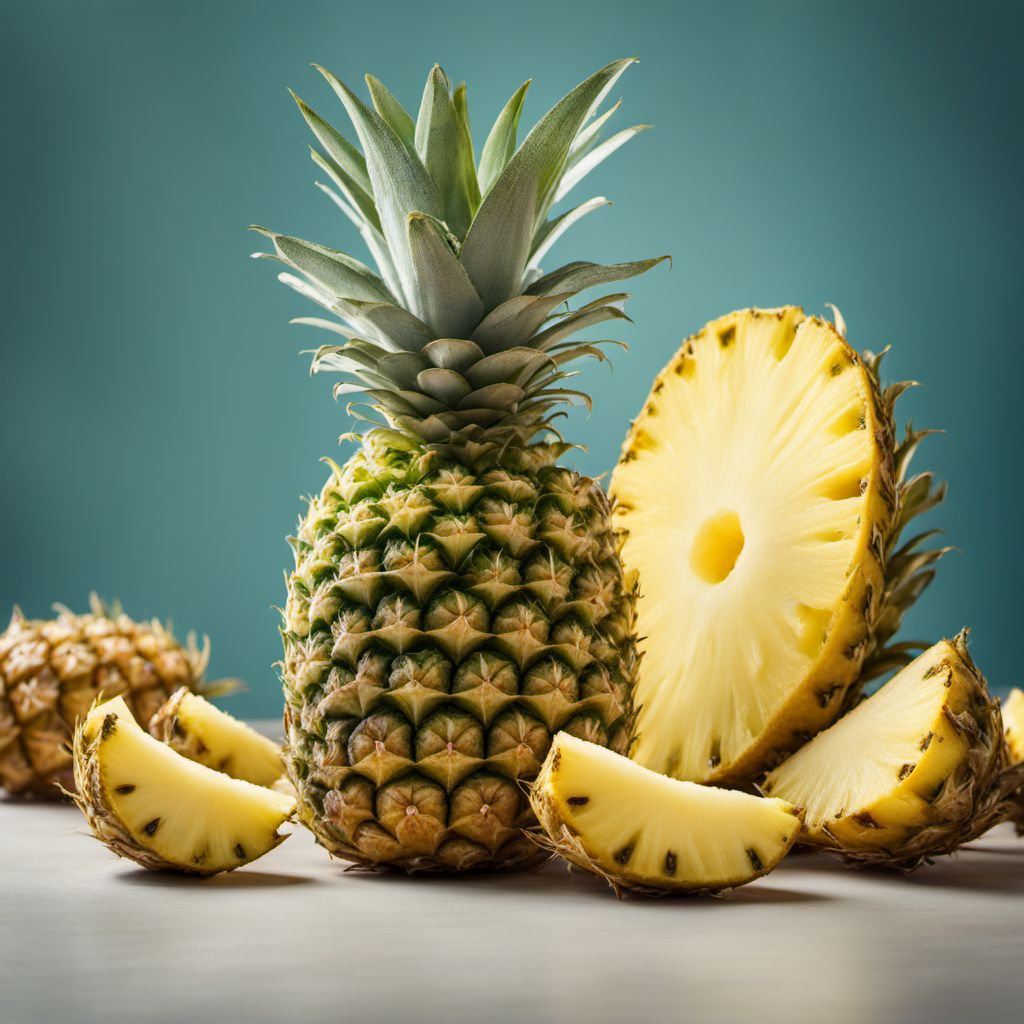
Ingredient
Pineapples and similar-
The Tropical Delight: Pineapples
Pineapples are tropical fruits with a spiky, rough exterior and a juicy, fibrous interior. They have a sweet and tangy flavor with hints of tropical notes. Pineapples are rich in vitamin C, manganese, and bromelain, an enzyme known for its digestive benefits.
Origins and history
Pineapples are native to South America, particularly Brazil and Paraguay. They were first discovered by European explorers during their voyages to the Americas. Pineapples were considered a luxury fruit in Europe due to their rarity and high cost. Today, they are cultivated in tropical regions worldwide, including Hawaii, the Philippines, Thailand, and Costa Rica.
Nutritional information
Pineapples are low in calories and fat but high in vitamin C, manganese, and dietary fiber. They also contain bromelain, an enzyme that aids digestion and has anti-inflammatory properties.
Allergens
Pineapples can cause allergic reactions in some individuals, particularly those who are sensitive to bromelain. It is advisable to consume pineapples in moderation if you have a known allergy.
How to select
When selecting a pineapple, look for one that is firm, heavy for its size, and has a sweet aroma at the base. The leaves should be green and intact. Avoid pineapples with soft spots, mold, or fermented smell. Additionally, you can gently tug on one of the inner leaves - if it comes out easily, the pineapple is ripe.
Storage recommendations
To store a whole pineapple, keep it at room temperature for 1-2 days to ripen fully. Once ripe, store it in the refrigerator for up to 4-5 days. Cut pineapples should be stored in an airtight container in the refrigerator and consumed within 2-3 days for the best quality.
How to produce
Pineapples can be grown in tropical or subtropical regions with warm temperatures and well-drained soil. They can be propagated from the crown of a mature pineapple by planting it in soil or water. However, growing pineapples at home may take several years before they bear fruit.
Preparation tips
Pineapples can be enjoyed fresh, sliced, or diced in fruit salads, smoothies, and tropical desserts. They are also commonly used in savory dishes like stir-fries, grilled kebabs, and Hawaiian-style pizzas. Pineapple juice is a popular ingredient in cocktails and mocktails. Additionally, pineapples can be grilled or caramelized for a delicious twist.
Substitutions
Mangoes or papayas can be used as substitutes for pineapples in recipes. However, keep in mind that the flavor and texture may differ.
Culinary uses
Pineapples are widely used in tropical and Asian cuisines. They are a key ingredient in dishes like pineapple fried rice, piña coladas, pineapple upside-down cake, and Hawaiian-style dishes. Pineapple is also a popular topping for pizzas and a refreshing addition to salsas and chutneys.
Availability
Pineapples are commonly available in tropical regions such as Hawaii, the Philippines, Thailand, Costa Rica, and Brazil. They are also imported and sold in many countries worldwide.
